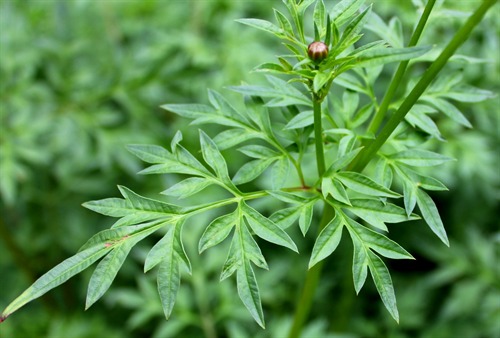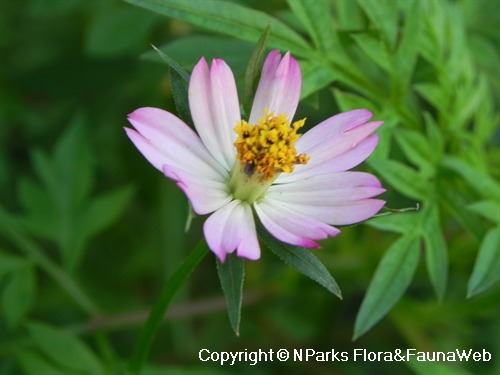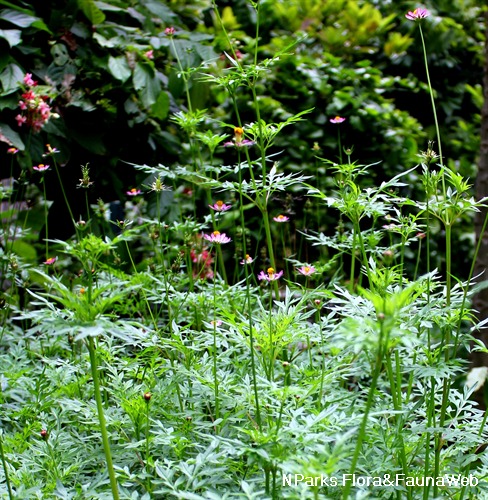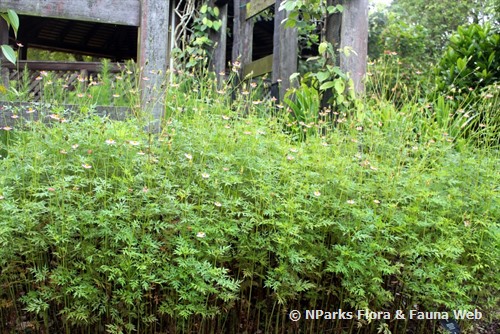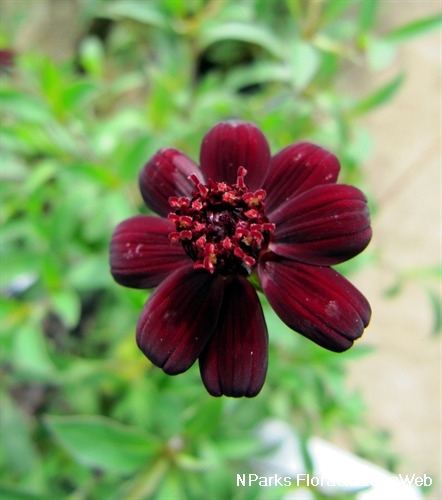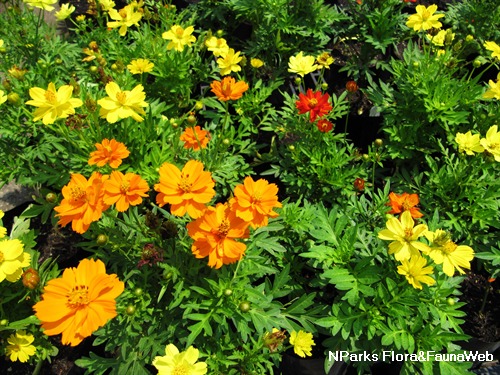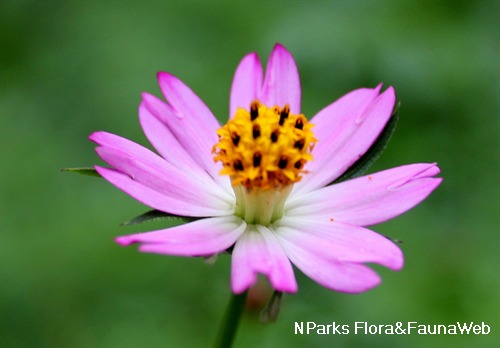
Back
Cosmos caudatus Kunth
| Family Name: | Asteraceae (Compositae) |
| Synonyms: | Cosmos bipinnatus, Bidens caudatus |
| Common Name: | Ulam Raja, Wild Cosmos, Cosmos, Pelampong, 帝皇乌蓝 |
Cosmos caudatus, also known as Ulam Raja (meaning ‘king’s salad’ in Bahasa Melayu), is an annual herbaceous plant that can grow up to 2.5 m tall. Its ornamental pink to purple flowers attract butterflies and bees. The deeply lobed, pinnately compound leaves add a visually lacy texture in the landscape. Young leaves are eaten raw in salads in the Malay cuisine and the nutritious leaves have a pleasant, mango-like flavour. The plant is also used in traditional medicine in Southeast Asia.
Name
Classifications and Characteristics
| Plant Division | Angiosperms (Flowering Seed Plants) (Dicotyledon) |
|---|---|
| Plant Growth Form | Herbaceous Plant |
| Lifespan (in Singapore) | Perennial |
| Mode of Nutrition | Autotrophic |
| Maximum Height | 0.3 m to 2 m |
Biogeography
| Native Distribution | Mexico, Caribbean, Central America, South America |
|---|---|
| Native Habitat | Terrestrial (Disturbed Area / Open Ground) |
| Preferred Climate Zone | Sub-Tropical / Monsoonal |
Description and Ethnobotany
| Growth Form | Annual or short-lived perennial herb up to 3 m tall. |
|---|---|
| Foliage | Triangular to ovate leaves (10-20 cm long) occur in pairs. They are finely divided into many lance-shaped segments. |
| Flowers | Compound flowers are composed of 8 rose-pink to purple, petal-like ray florets and many yellowish-green disk florets in the center. |
| Fruit | Dry fruits are known as achenes. Each fruit is 1-3 cm in length, approximately linear with 4 sides, and contains 1 seed. |
| Habitat | Normally found at an altitude from 0–2,600 m and often occurs in disturbed sites. |
| Cultivation | The plant’s life cycle ends after it flowers and sets seed. To prolong the plant’s lifespan, discourage flowering by periodically removing some of the leaves and immediately cutting any floral stalks that emerge. Plant in soil with good drainage. |
| Etymology | The genus name Cosmos comes from a Greek word that means order or ornaments. The species epithet caudatus is derived from a Latin word that means having a tail. |
| Ethnobotanical Uses | Edible Plant Parts : Edible Leaves Food (Fruit or Vegetable): Consumed as a vegetable in Malay cuisine. The leaves may be consumed raw in salads. Young shoots have been described as tasting like mangoes. It contains more than 20 types of antioxidants (Shui et al 2005). Medicinal: The roots contain 4 types of antifungal compounds (Fuzzati et al 2000). In Southeast Asia, it is also used to increase circulation of the blood in traditional medicine. |
Landscaping Features
| Desirable Plant Features | Ornamental Flowers |
|---|---|
| Landscape Uses | Flowerbed / Border |
| Thematic Landscaping | Economic Garden |
Fauna, Pollination and Dispersal
| Fauna Pollination Dispersal Associated Fauna | Butterfly-Attracting, Bee-Attracting |
|---|---|
| Pollination Method(s) | Biotic (Fauna) (Insects (Butterfly, Moth)) |
Plant Care and Propagation
| Light Preference | Full Sun |
|---|---|
| Water Preference | Moderate Water |
| Rootzone Tolerance | Fertile Loamy Soils, Well-Drained Soils |
| Propagation Method | Seed |
Foliar
| Mature Foliage Colour(s) | Green |
|---|---|
| Mature Foliage Texture(s) | Smooth |
| Foliar Type | Compound (Tripinnate) |
| Foliar Arrangement Along Stem | Opposite |
| Foliar Shape(s) | Non-Palm Foliage (Ovate) |
| Foliar Venation | Pinnate / Net |
| Foliar Margin | Pinnately Lobed / Pinnatifid |
| Foliar Apex - Tip | Acute |
| Foliar Base | Rounded / Obtuse, Truncate / Square |
| Typical Foliar Area | Mesophyll ( 45cm2 - 182.25 cm2 ) |
Non - Foliar and Storage
| Stem Type & Modification | Herbaceous |
|---|---|
| Root Type | Underground (Tap Root) |
Floral (Angiosperm)
| Flower & Plant Sexuality | Bisexual Flowers |
| Flower Colour(s) | Pink, Purple, White |
|---|---|
| Flower Symmetry | Radial |
| Individual Flower Shape | Ligulate / Strap-shaped |
| Flower Size - Remarks | 2.5 cm |
| Inflorescence Type | Head / Capitulum |
Fruit, Seed and Spore
| Mature Fruit Colour(s) | Black |
|---|---|
| Fruit Classification | Simple Fruit |
| Fruit Type | Indehiscent Dry Fruit , Achene |
Image Repository
Others
| Master ID | 29768 |
|---|---|
| Species ID | 4077 |
| Flora Disclaimer | The information in this website has been compiled from reliable sources, such as reference works on medicinal plants. It is not a substitute for medical advice or treatment and NParks does not purport to provide any medical advice. Readers should always consult his/her physician before using or consuming a plant for medicinal purposes. |


